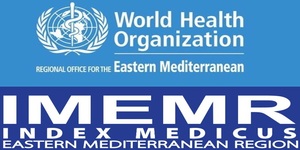Physical Problems among Children and Adolescents Complain of Diabetes Type I in Erbil City.
DOI:
https://doi.org/10.36321/kjns.vi20163.2675Keywords:
Physical status, Children, Adolescents, Type 1 DiabetesAbstract
Background: Type one diabetes mellitus is a chronic condition that may have an impact on health status affecting
the whole of physical activities.
Objective: This study aimed to assess the impact of diabetes type 1 on children and adolescent's physical status.
Patients and Methods: A descriptive study was conducted at Leila Qasim Center for Diabetes Care in Erbil City /Kurdistan Region-Iraq, started from 15th May. 2012 to 13th Aug. 2012. A reliable questionnaire (pedqlTM diabetes module version 3.0)(physical problem) was selected to assess the physical problem of children and adolescents complained of type I diabetes mellitus, and it was consisted of three main part which were concerned the socio-demographic characteristics, second information related signs and symptoms, and information related to physical problems, The validity of the tool was applied through 14 panel experts related to the specialty, correlation coefficient was used (r= 0.80), data were collected by direct interview technique; the data were analyzed through SPSS software (version 20), p-value ≤ 0.05 was considered as significant association.
Results: The finding of the study indicated that most of children and adolescents were female, mean of age were 11.80± 3.12 years, most of them were students, and at low socio economic status. The samples were complained of fatigue, thirst, frequent urination, unusual hunger, nocturnal enuresis, and also complained of retinopathy and nephropathy, but not complained of neuropathy.
Conclusion: Children and adolescents with type 1 diabetes complained of physical problem such as fatigue, thirst and frequent urination, and it was affected on their physical status.
Recommendation: Health education can be an integral part of diabetes management in all diabetic clinics and hospitals rather than a set of instructions given once at the beginning of the follow up. Education needs to be supported by psychosocial and possibly family therapy interventions.
Downloads
Downloads
Published
How to Cite
Issue
Section
License
Copyright (c) 2022 Rozhan Tofeeq* Dr. Kareema Ahmed** Dr. Shukir Saleem***

This work is licensed under a Creative Commons Attribution 4.0 International License.













